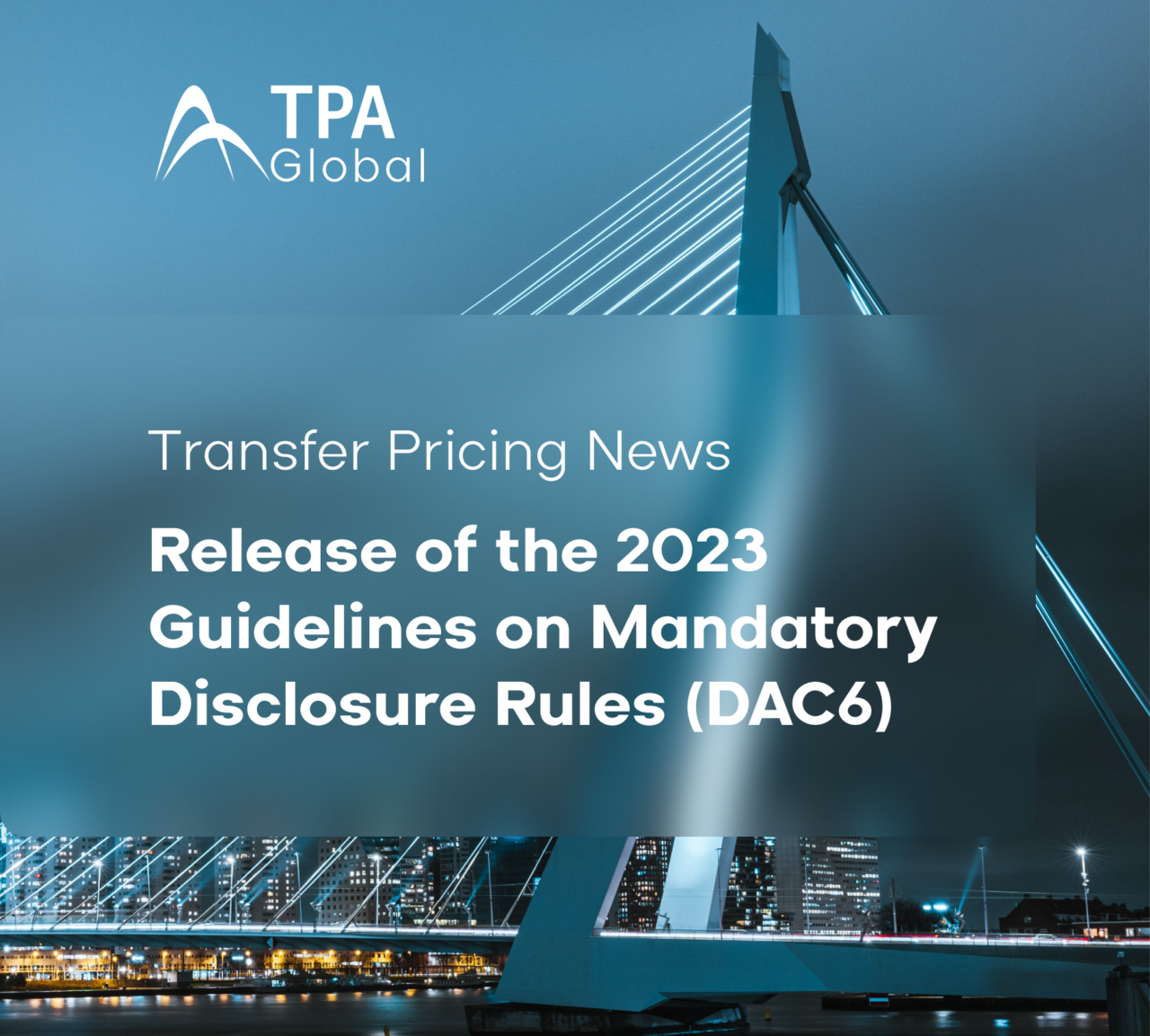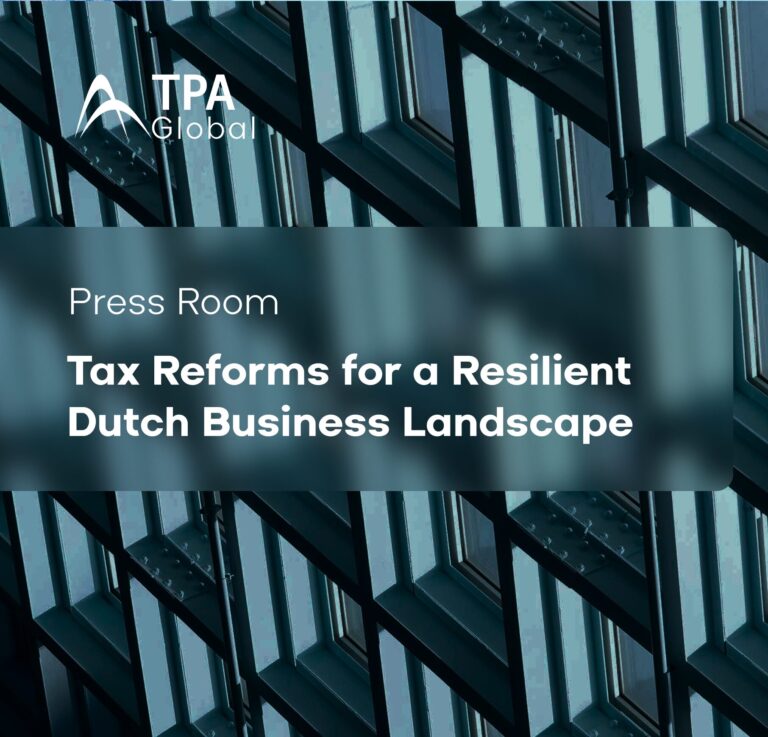Introduction
Effective from July 1, 2020, the Netherlands implemented the Mandatory Disclosure Rules (EU DAC6 Directive), aiming to enhance transparency in tax reporting. However, it was recognized during the drafting of DAC6 that practical challenges might arise in determining the reportability of specific arrangements.
In response to these challenges, the Dutch government released an updated version, the 2023 Guidelines on Reportable Cross-border Arrangements. This new version replaces the previous one issued in 2020, incorporating several substantial changes. To illustrate the application of these changes, the Guidelines provide 32 examples discussing various hallmarks.
In this article, we focus on highlighting the noteworthy revisions within the Guidelines, emphasizing their divergence from the earlier version.
Expanded Scope
The 2023 Guidelines bring further clarity to the determination of reportable cross-border arrangements. While the initial challenge of assessing reportability remains, the updated Guidelines emphasize that changes to existing arrangements, such as modifications in participants, legal form, residence for tax purposes, or funding structures, can trigger new reporting obligations. This expansion highlights the need for tax professionals to continuously reassess their clients’ arrangements to ensure compliance.
Participant Involvement
The Guidelines provide additional clarification regarding the term “participant” in reportable cross-border arrangements. To qualify as a participant, a person should have a certain degree of involvement, which can be evidenced by taking board resolutions or being subject to accounting or tax consequences. The Guidelines also highlight that cross-border arrangements can exist with a single participant, such as a transfer between a head office and its permanent establishment located abroad.
Intermediaries and Legal Professional Privilege
The Guidelines address the challenges faced by intermediaries with legal professional privilege when it comes to reporting obligations. If an intermediary invokes non-disclosure based on legal professional privilege, they are required to notify other intermediaries or the relevant taxpayer. This requirement ensures transparency while respecting the privileges associated with legal representation. Tax professionals should navigate this delicate balance and understand the implications for their clients.
Refining the Main Benefit Test
The main benefit test plays a pivotal role in determining whether an arrangement must be reported. The updated Guidelines refine the approach to this test, considering that a tax advantage in line with legislative intent may be considered but is not solely determinant. Tax professionals should carefully assess various factors and implications to ensure compliance with reporting obligations while optimizing tax strategies for their clients.
Unraveling he Hallmarks
The Guidelines provide tax professionals with a wealth of practical examples and detailed explanations to facilitate the application of different hallmarks, which act as indicators for potentially reportable arrangements. Let’s explore some notable clarifications:
- Hallmark B.2: The document contains a practical illustration that highlights the application of hallmark B.2. This hallmark deals with transforming earnings into capital, gifts, or other income types that are either taxed at a lower rate or exempt from taxation. Based on the example, hallmark B.2 requires a conversion of an already existing scenario to be applicable. If there is a new situation where there is no current income yet, then the conversion referred to in hallmark B.2 does not occur.
- Hallmark E.3: To meet the requirements of hallmark E.3, it is crucial that there is a transfer of functions, risks, and/or assets across borders within a multinational group. This transfer must lead to a decrease in the projected annual earnings before interest and taxes (EBIT) of the transferor(s) during a three-year period after the transfer, falling below 50% as a result.
According to the Guidelines, if the transferor is not an operating company but, for example, a holding or financing company with minimal operating results or EBIT, the calculation should focus on the core business of the company. For instance, if financing activities are the primary business, the EBIT should consider the financial results associated with those activities.
The Guidelines now provide examples that clarify the starting point of the three-year period after the transfer and how to handle situations where the transferor has a negative EBIT that worsens due to the transfer. These examples were previously shared on the LinkedIn page of the Dutch Tax and Customs Administration (DTCA) and have been included in the Guidelines.
Importantly, the second-to-last example in the Guidelines indicates that transfers between a head office and a permanent establishment also fall under cross-border transfers, triggering the reporting requirement under hallmark E.3. The Deputy Minister of Finance suggests applying a separate entity approach for the permanent establishment in such cases.
Additional Points
- The Guidelines also provide practical examples and further explanations for other hallmarks, which are valuable resources for tax professionals. It’s essential to thoroughly review these examples and apply them in assessing reportable arrangements.
- Tax professionals should maintain a proactive approach to staying updated with the latest developments and guidance related to DAC6 and Mandatory Disclosure Rules. Regularly consulting trusted sources and attending relevant training programs can help in navigating the complexities of these rules effectively.
Conclusion
The 2023 Guidelines on Reportable Cross-border Arrangements released by the Dutch government provide tax professionals with essential updates and clarifications to navigate the complex landscape of the EU DAC6 Directive. By expanding the scope, defining participant involvement, addressing legal professional privilege, refining the main benefit test, and unraveling the hallmarks, these guidelines offer valuable insights for ensuring compliance and optimizing tax strategies.
Should you have any inquiries regarding the aforementioned information, please contact us. Our expert team is dedicated to assisting you.



